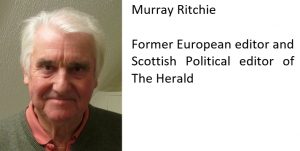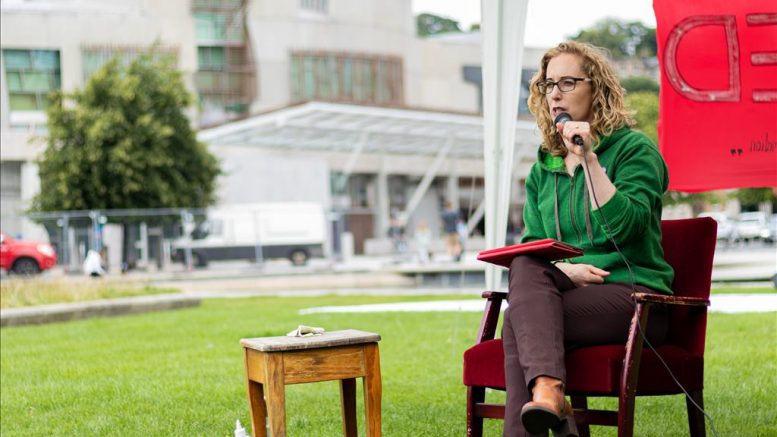The Green Party’s latest foray into government has just taken place in Scotland, boosting the drive for Scottish independence. No longer can the Greens be seen in Britain as just an eccentric political sideshow, writes Murray Ritchie.
Scotland’s government has just taken on a distinct shade of emerald. For the first time in the United Kingdom the Green Party will have ministers sitting around a cabinet table thanks to a deal with Nicola Sturgeon’s SNP administration in Edinburgh.
And so the UK joins the company of Green-influenced governments and devolved legislatures across the democratic world, for example in Belgium and Canada. As Green influence continues to spread, the crucial COP26 conference will take place with convenient timing in Glasgow later this year.
World figures from the British Queen to the Pope to the US president will be lending the greening of the globe new credence. You can bet Scotland’s new Green ministers will be on parade boasting their support for the Scottish government’s promise to make Scotland the world leader on climate change, making the country net zero by 2045.
The Edinburgh deal is not a formal coalition, rather a series of agreements on how the Greens will support the SNP’s programme for government to be unveiled this month. If matters get awkward there will be exclusions for topics which greatly exercise the Greens such as road building programmes, oil extraction and economic growth.
What matters most to Nicola Sturgeon is, crucially, the Greens pledge to support the SNP in any parliamentary vote of confidence.
Sturgeon’s party, being one short of a majority in Holyrood, fretted that it could be ambushed at any time. But with the Greens on board, she can push her legislative programme past bitterly hostile Opposition MSPs and – most critically for the Scottish National Party – give fresh impetus to her drive for Scottish independence.
This development is a sign that Ms Sturgeon is now looking beyond the Covid pandemic and preparing to call a second independence referendum. Alarm bells are suddenly ringing across the land as Unionist parties react with fury. Their frenzied denunciations are a measure of their fear.
Indyref2 is the glue which binds the independence movement and provides Ms Sturgeon’s protective shield.
To the Tories this is “extremism” and “economic vandalism” which will “wreck the economy” while Labour says it makes the Scottish Green Party a mere “branch office” of the SNP – a dig at the accusation long levelled by nationalists at the Labour Party in Scotland as a branch office of London Labour.
For good measure the right-wing commentator Andrew Neil denounced the Greens as “Marxist eco-zealots”. All of which shows how Ms Sturgeon has thrown her enemies into impotent rage. It is a smart move.
Ms Sturgeon does now seem unassailable. Her record on fighting the pandemic is held in high esteem despite Scotland recording distressing Covid levels in the weeks since the schools went back, and football crowds returned to the terraces. Scotland has at the time of writing the worst statistics for Covid in the UK. Shamefully, it also has the worst death rate for drug abuse in Europe.
Education standards are also attracting fierce criticism, and the struggles of the NHS in Scotland are a constant source of ammunition for her opponents. Her explosive political divorce from Alex Salmond, her predecessor and mentor, during his sex scandal trial (he was cleared) attracted worldwide publicity of the wrong sort and gave her enemies a field day, attracting months of damaging coverage.
And yet, astonishingly, the SNP remain miles ahead in the polls, apparently untouchable and in no danger from the other Holyrood parties who seem to have no answers to this phenomenon beyond the usual cross-chamber Punch and Judy bickering.
Labour has a newish leader in Anas Sarwar who has made little impression, and the Tories are stuck with the crippling embarrassment of their association with Boris Johnson. That leaves the Liberal Democrats – all four of them – who don’t matter.
What can explain Ms Sturgeon’s unlikely political survival? In a word: independence.
Scotland’s political fault line – independence or the Union – divides the voting population roughly in half. Those who favour independence naturally back the SNP. On the Union side the vote is damagingly split among Tories, Labour and LibDems.
Pro-indy voters are a forgiving lot. They seem content to overlook the SNP’s weaknesses for as long as it will take it to deliver Indyref2. No matter how poor the SNP’s record in government, it matters not. Indyref2 is the glue which binds the independence movement and provides Ms Sturgeon’s protective shield.
What matters most to Nicola Sturgeon is, crucially, the Greens pledge to support the SNP in any parliamentary vote of confidence.
Which brings us back to the Greens. As part of that same movement they have stopped the unthinkable happening. A lost vote of confidence would probably have removed Ms Sturgeon but, more importantly for the SNP, it might also have scuppered the SNP’s best-laid plans for calling Indyref2 within the coming two years.
Now Scotland has something in common with much of the rest of the free world – a Green executive presence which owes much to a proportional electoral system. It might not carry the same force that helped propel Germany to forsake nuclear power when Greens were for a time in federal government. Scotland’s deal is more of an understanding based on the imaginative agreement invented in New Zealand, but ground-breaking nonetheless.
As a bonus for Ms Sturgeon there is now an incentive for voters in Scotland to sideline Mr Salmond’s rival pro-independence Alba party which threatened to split the SNP with historical personal grudges. Unlike the Alba party the Greens are not suspected of being a kind of fifth column – and the voters know it.
The new Scottish Green ministers – Patrick Harvie and Lorna Slater, twin leaders of their party – have just started work. It will be interesting to see if they decline ministerial limousines and cycle to the office.





